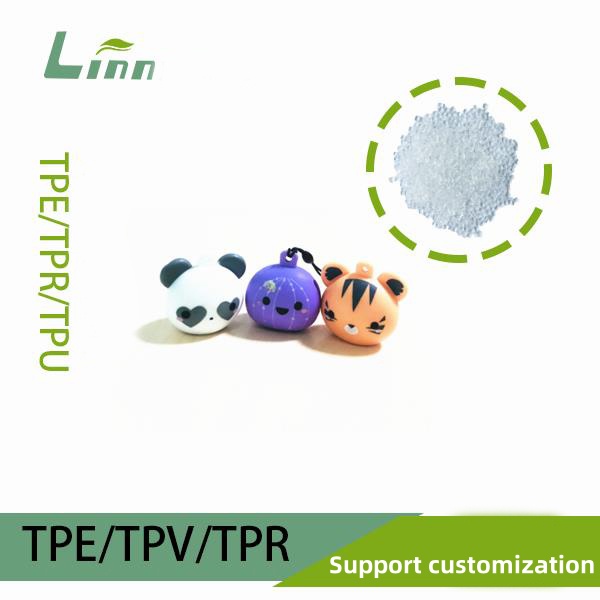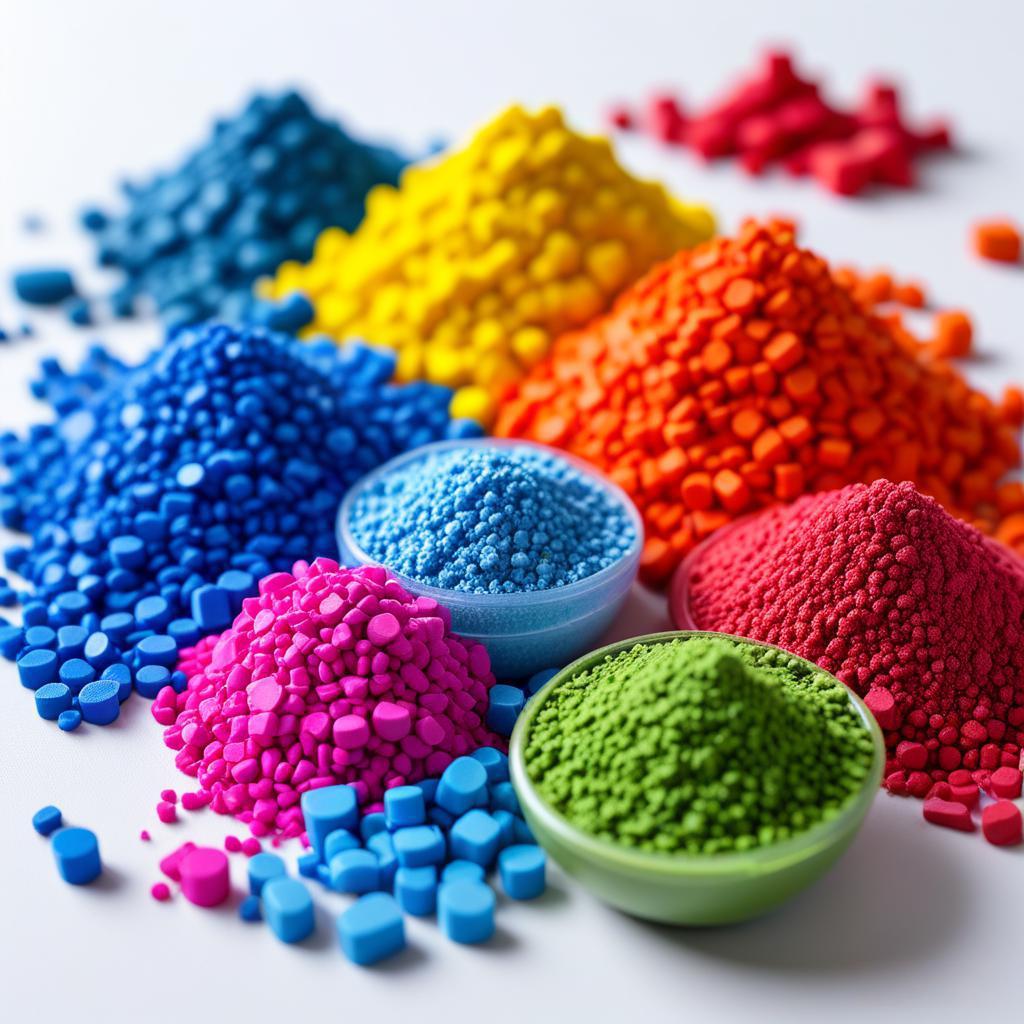Having spent over a decade working with TPE (thermoplastic elastomer) in various manufacturing settings, I’ve seen firsthand how frustrating surface flow marks can be. These imperfections don’t just mar the aesthetics of a product—they can erode customer trust and threaten production timelines. If you’re grappling with severe flow marks on TPE parts, this article is for you. Drawing from my experience and industry insights, I’ll walk you through a step-by-step, practical approach to diagnose and eliminate flow marks, ensuring your products meet high-quality standards.

1. What Causes Surface Flow Marks on TPE?
Before diving into solutions, let’s pinpoint why flow marks appear. TPE’s unique blend of rubber-like elasticity and plastic processability makes it a go-to material for everything from medical tubing to automotive seals. However, during processing—especially injection molding—flow marks can emerge due to several factors:
Material Composition: TPE’s flow properties, volatile content, and molecular structure play a big role. High levels of low-molecular-weight components can volatilize during heating, creating gas pockets that manifest as flow marks.
Mold Imperfections: Inadequate venting, poorly placed gates, or rough mold surfaces can trap air or hinder melt flow, leading to surface defects.
Processing Conditions: Suboptimal settings for temperature, injection speed, or pressure can disrupt melt flow, causing uneven surfaces or trapped gases.
Environmental Influences: Humidity in the production area, dust contamination, or improper material storage can introduce variables that exacerbate flow marks.
In my experience, flow marks are rarely the result of a single issue. More often, they stem from a combination of these factors, which is why a holistic approach is essential.
2. Effective Strategies to Eliminate TPE Flow Marks
Below, I’ve outlined a comprehensive set of solutions, from material handling to process tweaks, based on years of troubleshooting in real-world production environments. These steps are designed to be actionable and adaptable to different scales of operation.
2.1 Selecting and Preparing TPE Materials
The foundation of flawless TPE parts starts with the raw material. Here’s how to optimize your material choice and handling:
Opt for Low-Volatile Grades: Choose TPE grades with minimal volatile content, ideally below 0.5%, as specified in the supplier’s Technical Data Sheet (TDS). This reduces gas formation during processing.
Pre-dry Materials: Even though TPE isn’t highly hygroscopic, moisture absorption can occur in humid conditions. Dry TPE pellets at 80°C for 2-3 hours before molding to eliminate moisture-related defects.
Use Compatible Additives: In some cases, adding flow enhancers or defoaming agents (like silicone-based compounds) can improve melt behavior. Ensure these additives align with your product’s performance requirements.

2.2 Enhancing Mold Design and Upkeep
Molds are critical to TPE part quality, and small design flaws can lead to persistent flow marks. Here’s how to optimize your molds:
Improve Venting: Add vent slots to the mold’s parting line or cavity to allow trapped gases to escape. Keep vent depth at 0.02-0.05mm and width at 3-5mm for optimal performance.
Optimize Gate Placement: Position gates in thicker sections of the part to promote smooth melt flow and minimize gas entrapment in thin areas.
Polish Mold Surfaces: Reduce mold surface roughness to below 0.4μm Ra through polishing or sandblasting to enhance melt flow and reduce friction.
Maintain Molds Regularly: Clean molds every 5,000-10,000 cycles to remove residue or oil buildup that could clog vents or affect surface quality.
2.3 Fine-Tuning Injection Molding Parameters
Process parameters are often the key to unlocking perfect TPE surfaces. Below is a table summarizing critical adjustments, based on my hands-on testing:
|
Parameter |
Problem |
Solution |
|---|---|---|
|
Melt Temperature |
Overheating increases volatiles, worsening flow marks |
Set temperature to the lower end of the recommended range, e.g., 190-210°C. |
|
Injection Speed |
High speeds trap air |
Use staged injection: start at 20-30% speed, then ramp up gradually. |
|
Holding Pressure |
Low pressure causes shrinkage or marks |
Set holding pressure to 50-70% of injection pressure, hold for 2-5 seconds. |
|
Mold Temperature |
Cold molds lead to premature solidification |
Maintain mold temperature at 40-60°C for better cavity filling. |
|
Back Pressure |
Insufficient back pressure retains gases |
Increase back pressure to 5-10MPa to ensure uniform melt. |
Real-World Example: I once worked with a consumer electronics manufacturer struggling with flow marks on TPE grips. Their melt temperature was set at 225°C, causing excessive volatile release. By lowering it to 200°C, adopting a staged injection speed (30% to 60%), and adding vent slots, we reduced flow marks by 95%, boosting the pass rate from 70% to 97%.
2.4 Managing the Production Environment
Environmental factors can subtly but significantly impact TPE quality. Here’s how to keep your production space in check:
Regulate Humidity: Keep workshop humidity at 50-60% using dehumidifiers, especially in coastal or rainy regions.
Minimize Dust: Install air filtration systems near molding machines to prevent dust from contaminating molds or materials.
Store Materials Properly: Seal TPE pellets in airtight containers to avoid moisture or contaminant exposure.

2.5 Establishing Quality Control Measures
To prevent flow marks from recurring, integrate these monitoring and feedback practices:
Surface Inspection: Use magnifying tools or microscopes to assess flow mark severity and track improvements.
Parameter Tracking: Log temperature, pressure, and speed data via the molding machine’s software to identify correlations with defects.
Client Collaboration: Regularly review feedback from customers to fine-tune processes and catch issues early.
3. Mistakes to Avoid When Addressing Flow Marks
Over the years, I’ve seen teams fall into traps that prolong flow mark issues. Here are pitfalls to watch out for:
Cranking Up the Heat: Raising melt temperature to improve flow often backfires, as it increases volatile release and worsens marks.
Skipping Mold Care: Neglecting regular mold cleaning can lead to clogged vents, making flow marks a persistent problem.
Overhasty Material Changes: Switching TPE grades without analyzing process settings can introduce new issues and inflate costs.
Ignoring Minor Factors: Small oversights, like insufficient drying or dusty workspaces, can compound into major quality headaches.

4. Tailoring Solutions to Your Operation
The best approach to flow marks depends on your resources and production scale. Here’s a guide to help you choose:
|
Operation Size |
Recommended Actions |
Cost/Complexity |
|---|---|---|
|
Small Operations |
Focus on process tweaks (e.g., temperature, speed) and basic mold venting upgrades. |
Low/Simple |
|
Medium Operations |
Combine process optimization with pre-drying equipment and routine mold maintenance. |
Moderate/Medium |
|
Large Operations |
Overhaul materials, molds, processes, and environment, with automated quality monitoring. |
High/Advanced |
Start with low-cost changes, like parameter adjustments, before investing in larger upgrades like new molds or drying systems.
5. Wrapping Up
Dealing with TPE surface flow marks can feel like an uphill battle, but with a methodical approach, it’s entirely manageable. My years in the field have taught me that persistence and attention to detail—whether it’s tweaking a mold or monitoring humidity—can transform frustrating defects into a thing of the past. I hope these insights empower you to tackle flow marks with confidence. If you hit a snag, don’t hesitate to reach out—I’m here to help brainstorm solutions!

6. Frequently Asked Questions
To round things out, here are answers to common questions about TPE flow marks, based on my experience:
Q1: Why do flow marks only show up in some batches?
A: Batch-to-batch variations could stem from inconsistent volatile content, storage conditions, or slight process deviations. Compare TDS data for affected batches and review molding logs for clues.
Q2: Do vent slots shorten mold life?
A: Properly designed vents (within 0.02-0.05mm depth) won’t harm molds. Poorly machined vents, however, can cause wear, so use a skilled mold maker.
Q3: Parameter tweaks fixed flow marks but slowed production. What now?
A: Longer cycle times from adjusted speeds or holding times can reduce output. Try optimizing cooling phases or using multi-cavity molds to balance quality and efficiency.
Q4: How can I quickly diagnose flow mark causes?
A: Start with a checklist: verify mold venting, ensure material drying, and test parameter changes. Most issues tie back to these areas.
Q5: Flow marks are gone, but I see tiny surface pits. What’s wrong?
A: Pits often come from rough mold surfaces or additive issues. Polish molds to 0.4μm Ra or below and check additive compatibility with your TPE.
I hope this guide helps you conquer TPE flow marks and elevate your production quality. If you have more questions or need tailored advice, let me know—I’d love to assist! Let’s keep pushing for flawless TPE products together.




